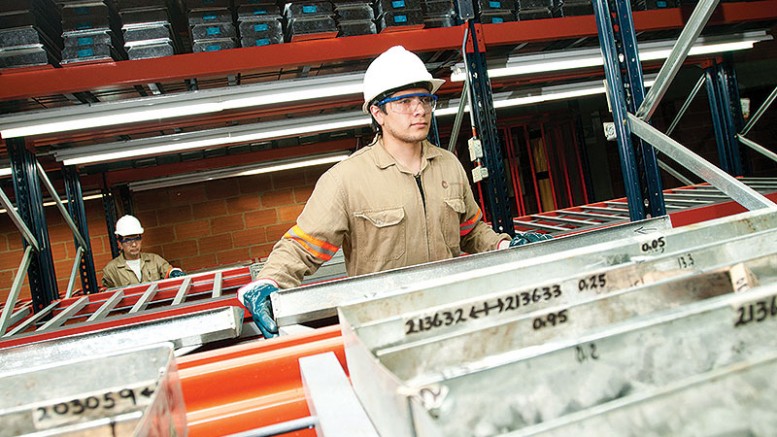A feasibility study on Continental Gold’s (TSX: CNL; US-OTC: CGOOF) Buritica gold-silver project in Antioquia, Colombia, confirms strong economics for a high-grade underground mine.
BMO analyst Brian Quast comments the study has increased his “level of confidence” in the project’s economics.
The new study envisions Buritica as a 14-year operation recovering a total of 3.5 million oz. gold and 6.4 million oz. silver. Life of mine production will average 253,000 oz. gold and 466,000 oz. silver annually, with higher output expected during the first five years.
A 2014 preliminary economic assessment (PEA) had proposed an 18-year operation at Buritica, churning out 4.8 million oz. gold and 7.1 million oz. silver. It, however, included lower-grade inferred resources.
The feasibility study indicates the underground mine will process 2,100 tonnes per day, before ramping up to 3,000 tonnes per day by year three. This varies slightly from the PEA’s initial throughput of 2,000 tonnes per day and ramp up to 3,500 tonnes per day over the same time.
The cost to start-up the mine is now US$389 million, including a US$35 million contingency. Sustaining capital costs over the life of mine are US$272.5 million, down from US$347 million previously. This brings total costs for Buritica at US$661.5 million, a 10% improvement over the PEA.
The total cost improvement is largely due to the drop in sustaining capital costs, as the mine life has shortened following the removal of the lower-grade inferred resources, Paul Begin, Continental’s chief financial officer, says. As a result, metal grades have increased to 8.4 grams gold per tonne and 24.3 grams silver per tonne.
Estimated total cash costs are US$411 per oz. gold, minus silver credits, down US$20 per oz. from the PEA.
Continental will use a conventional crushing-grinding-gravity-cyanidation circuit to process the ore to produce a doré. Metallurgical testwork completed to date indicate average gold and silver recovery rates of 94.1% and 59.9%, respectively.
Despite the shorter mine life, the base-case economics remain robust. Buritica boasts an after-tax internal rate of return (IRR) of 31.2% and a net present value (NPV) of US$860 million, using a 5% discount rate and metal prices of US$1,200 per oz. gold and US$15 per oz. silver. This compares to an earlier IRR of 31.5% and a NPV of US$1.08 billion, using similar metal price assumptions.
Payback has decreased to 2.3 years from 2.8 years.
“They are actually remarkably similar in terms of the economic result,” Begin says of the two studies. “Of course, it is a much tighter study given that it is a feasibility study, right. But the flow sheet and everything else is similar to what it was in the PEA, it is just all the estimates have been tightened up.”
With the feasibility study checked off, Quast reckons investors will keep an eye on when the company will receive the necessary permits to start construction.
Continental already operates a 30-tonne-per-day underground mine at Buritica, and has applied to amend its existing environmental permit to incorporate the larger footprint of the proposed mine, Begin explains.
Once the company receives the amended permit in 2016, it will make a construction decision, Begin says, adding that will be a “no-brainer.”
Meanwhile, Continental plans to file a technical report on the feasibility study shortly, followed by the results of its test stope in the second quarter. It will also work on detailed engineering.
Along with feasibility study, Continental published a maiden reserve estimate for Buritica’s two main vein systems: Veta Sur and Yaragua. The reserves total 13.7 million tonnes grading 8.4 grams gold and 24.3 grams silver per tonne for 3.71 million oz. gold and 10.72 million oz. silver.
Despite the strong project economics and new reserve estimate, Quast has lowered his target price to $2.75 from $3.50 per share. “The result of this feasibility study is that our project NPV increases, but the lower share price since the last update (i.e. PEA) increases the dilution from our equity assumption,” he explains.
Continental has been assessing both the capital and debt markets, Begin says, noting the junior plans to fund the project through a mix of equity and debt.
Continental shares closed Feb.26 at $1.57, up 9% since the release of the feasibility study two days earlier. The stock, however, is down 31% since announcing the PEA on Nov. 17, 2014.


Be the first to comment on "Continental Gold confirms Buritica’s strong economics"